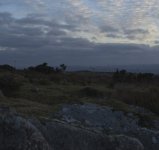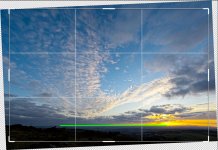- Messages
- 4,419
- Name
- Martin
- Edit My Images
- Yes
I posted an image in it's own thread yesterday and asked for critique. One of the comments referred to straightening the image.
This is the thread link: Sunset
The image is in fact dead straight as that is the way the landscape is; higher on the left to lower on the right, but of course it doesn't look like it.
Do you think an image should be straightened to make it look 'correct', or left looking wonky because that is the way the landscape is? Just curious.
This is the thread link: Sunset
The image is in fact dead straight as that is the way the landscape is; higher on the left to lower on the right, but of course it doesn't look like it.
Do you think an image should be straightened to make it look 'correct', or left looking wonky because that is the way the landscape is? Just curious.



